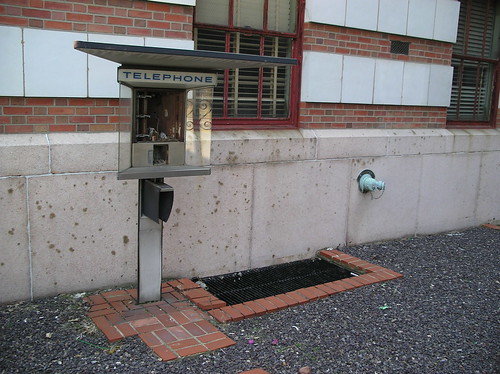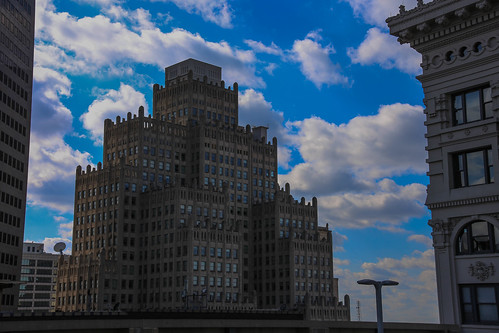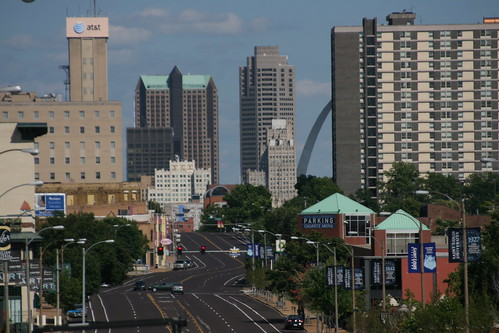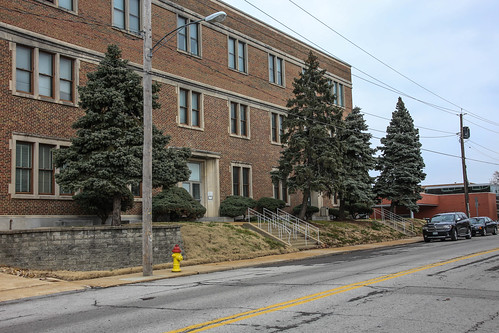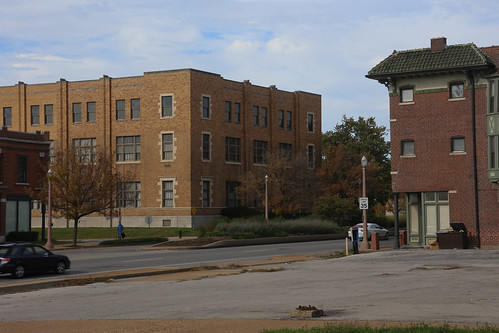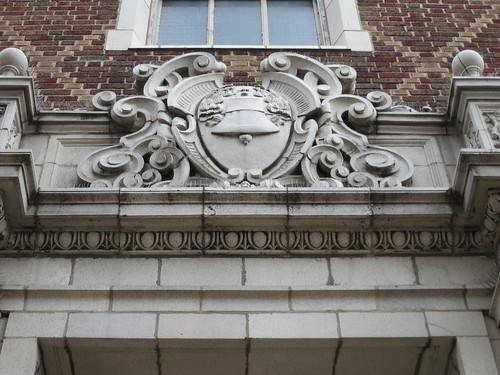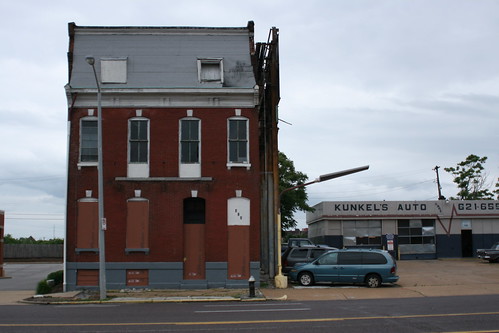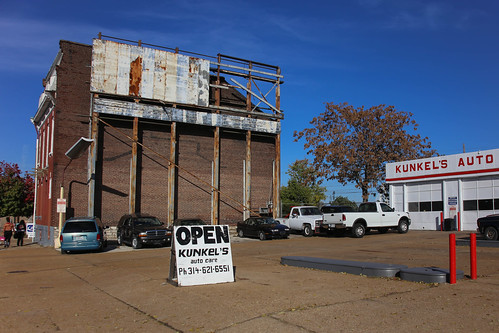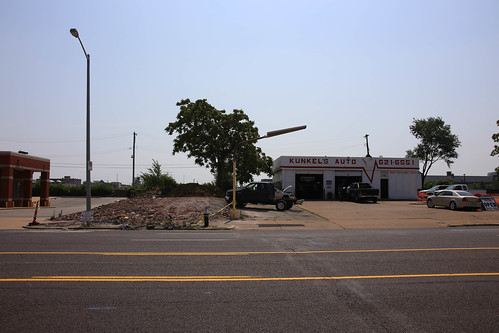Over the past couple of years an impressive roster of food trucks has sprung up in St. Louis despite an almost complete ban on street vendors that spans the entire region. Street Vendors are prohibited as the default, and vending districts don’t always match up with good vending locations. As can be seen here in St. Louis City Ordinance 65061, vending is allowed only Downtown (East of Tucker), along the river from Chouteau to Biddle, along Grand from Natural Bridge to 70, on a tiny block bounded by Broadway, Meramec and Ohio (“Licensed vendors in this district may sell agricultural products and flowers only”), and in any ward whose number ends in ‘4.’ These rules seem arbitrary and disconnected from reality.
From St. Louis City Ordinance 65061
SECTION THREE. Vending prohibited; exceptions.
No person shall sell or offer for sale or permit the offering or selling of any goods, wares, merchandise, flowers, horticultural products, services, food or beverages upon any public sidewalk, street, roadway, or roadway median within the City of St. Louis except in those areas designated by ordinance as Vending Districts.
Although these laws are often unenforced, they’re on the books. Luckily not every entrepreneur has been deterred. Stands selling BBQ or hot dogs, t-shirts and rugs, bootleg CDs/DVDs and sno-cones can be seen on vacant lots or in front of businesses all over the city. While I’m sure that some of these businesses are licensed, some are certainly not.

Mi Hungry Bar-B-Que on North Kingshighway – I remember eating here 6 or 7 years ago off Grand. Pretty tasty stuff.
Recently, food trucks have been bringing street vendors the kind of positive attention that could lead City Hall(s) to rethink their restrictive ordinances. While food trucks are not new to St. Louis, the 20-30 that have popped up over the last couple of years represent something new. These businesses feature creative options that differentiate them from the conventional American hot dog stand or taco truck. Over the past two years I’ve visited food trucks with specialties ranging from Korean Tacos to grilled cheese sandwiches, Filipino rice bowls to po-boys, Vietnamese sandwiches to gyros and from sushi rolls to crepes. The diversity of options that have appeared in this relatively short time span is incredible.
As these new eateries have proliferated, they have established a growing list of lunchtime parking spots to rotate between. Popular locations include CityGarden, Wells Fargo Advisors (Beaumont and Pine), SLU Pius Library, Anthem (19th and Chestnut), Washington University Medical Center (Taylor and Scott), and Purina on Chouteau. With the exception of CityGarden, most of these places don’t usually attract pedestrians. They are all in close proximity to large daytime populations, but sit on the edge of parking lots, or underused green space. One contributing factor is that St. Louis Food Trucks are Pretty Much Banned from Parking Anywhere Ever.

Food Trucks outside of SLU’s Pius Library on Lindell
In a positive step towards accepting these mobile vendors, City Hall established “Food Truck Row” on 13th Street between Market and Chestnut this last summer. Granted, this spot is located on the Gateway Mall in the Civic Center (often referred to by suburbanites as “Homeless Park”), and is more convenient to City Hall employees than anyone else, but it’s a nice gesture. As someone who works in Downtown West (but not at one of the huge organizations that can attract their own food trucks), I find Food Truck Row to be one of my more conveniently located lunch options (behind Mom’s Kitchen, Hoagie City, The White Knight Diner and Imo’s on Washington).

Zia’s at Food Truck Row
Although it has been reported that business at Food Truck Row is slow, I’ve seen some busy lunch hours there. It can also be anticipated that business will improve once SLU’s Law School is completed, and the renovation of the Municipal Courts Building should also help out. One thing that the City could do to help, is add more seating! There are currently only three tables in this rather large park, and none in the adjacent blocks of green space.

Food Truck Row needs more Tables
Keep an eye out for Food Trucks around town, and try to support the ones that stop at Food Truck Row. There are some really incredible chefs behind many of these trucks, and just as the food truck gives them the opportunity to try out their business, it gives us an opportunity to try out their food.
For daily map of Food Truck Parking spots, check out http://showmefoodtrucks.com/.

